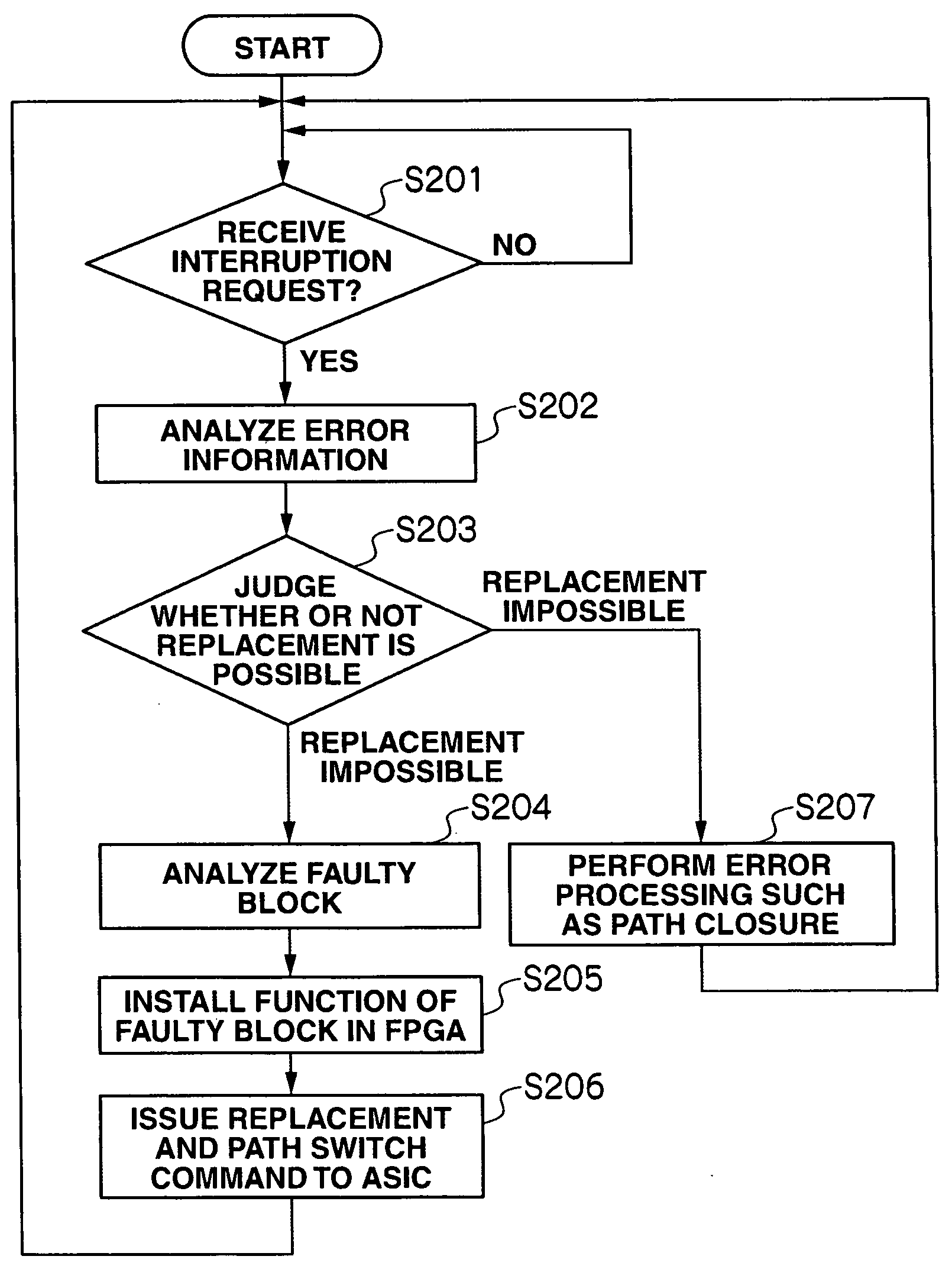Semiconductor integrated circuit device and storage apparatus having the same
- Summary
- Abstract
- Description
- Claims
- Application Information
AI Technical Summary
Benefits of technology
Problems solved by technology
Method used
Image
Examples
embodiment 1
[0051]FIG. 1 shows the configuration of a built-in ASIC board 1, which is a semiconductor integrated circuit device. An ASIC 10, CPU 20, FPGA 30, and memory 40 are arranged on the built-in ASIC board 1. The CPU 20 is connected to the ASIC 10 and FPGA 30 with signal lines 51 and 53 respectively, thereby enabling data exchange. The CPU 20 is also connected to the memory 40 with a signal line 54, thereby enabling data transmission to the memory 40. The memory 40 and FPGA 30 are connected to each other with a signal line 55, thereby enabling data transmission from the memory 40 to the FPGA 30. The ASIC 10 and FPGA 30 are also connected to each other with a signal line 52, thereby enabling data exchange.
[0052]The ASIC 10 is a first large scale integrated circuit and includes circuits for performing various tasks. The CPU 20 controls the ASIC 10, FPGA 30, and memory 40, thereby controlling the entire built-in ASIC board 1. The FPGA 30 is a programmable second large scale integrated circui...
embodiment 2
[0085]Embodiment 2 of the invention will be explained below. Conventionally, data in a RAM or a flip-flop is corrupted due to irradiation of alpha rays or neutron rays, for example, a data element originally having ‘0’ may have ‘1’ instead. In recent years, in particular, the RAM and flip-flop are manufactured in small sizes thanks to subdivided manufacturing processes, and so the data may be corrupted even by smaller energy. This is called a soft error and, because it is not a failure in the hardware, normal operation can be continued as long as another piece of correct data is written in the RAM or flip-flop.
[0086]In embodiment 1, when a failure is detected, even when the failure is caused by a soft error, not a hard error, the failure is handled as a hard error and a faulty logical block is replaced with the logical block 11F in the FPGA 30. However, if the failure is not caused by a physical failure in the ASIC 10, it is unnecessary to use the FPGA 30 and the built-in ASIC board...
embodiment 3
[0097]Embodiment 3 of the invention will be explained below. The configurations in embodiments 1 and 2 include the I / F conversion blocks 13A and 13B; however, the configuration in embodiment 3 has no I / F conversion block 13A or 13B. Only the differences from embodiments 1 and 2 will be explained below and shown in the drawing.
[0098]FIG. 13 shows the configurations of the ASIC 10 and FPGA 30 in embodiment 3. The internal bus 12 in the ASIC 10 is directly connected to the logical block 11F in the FPGA 30. The processing performed by the ASIC 10 and CPU 20 is the same as that in embodiments 1 and 2. Note that the self-test circuits 15A-15E used in embodiment 2 are not shown in FIG. 13.
[0099]According to embodiment 3, unlike in embodiments 1 and 2, it is not necessary to provide the I / F conversion blocks 13A and 13B, so it is possible to obtain a built-in ASIC board 1 where the ASIC 10 and the FPGA 30 are easily connected.
PUM
 Login to View More
Login to View More Abstract
Description
Claims
Application Information
 Login to View More
Login to View More - R&D
- Intellectual Property
- Life Sciences
- Materials
- Tech Scout
- Unparalleled Data Quality
- Higher Quality Content
- 60% Fewer Hallucinations
Browse by: Latest US Patents, China's latest patents, Technical Efficacy Thesaurus, Application Domain, Technology Topic, Popular Technical Reports.
© 2025 PatSnap. All rights reserved.Legal|Privacy policy|Modern Slavery Act Transparency Statement|Sitemap|About US| Contact US: help@patsnap.com



